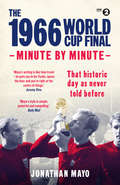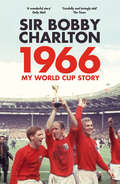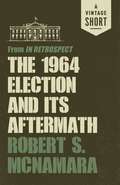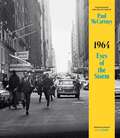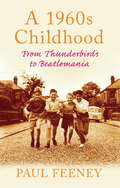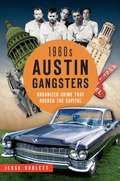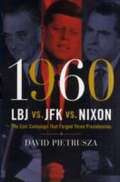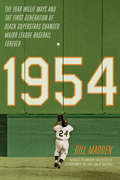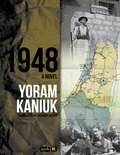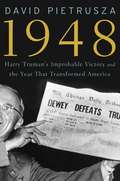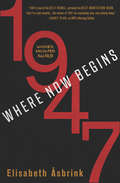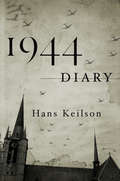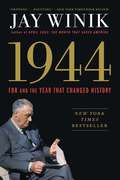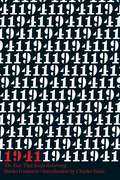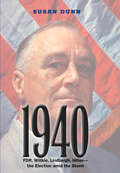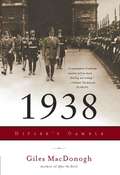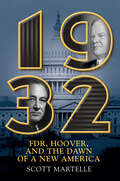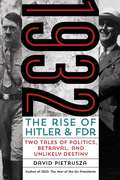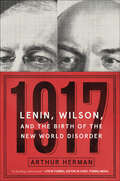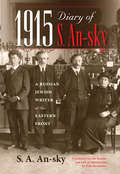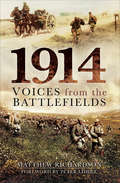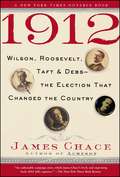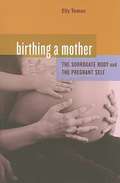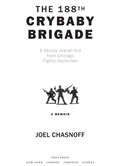- Table View
- List View
The 1966 World Cup Final: Minute by Minute (Minute By Minute)
by Jonathan Mayo30th July 1966. For millions it was the greatest day of the greatest decade. They may never have seen the Beatles in the Cavern or danced at Woodstock, but they got to see the finest moment in English sporting history. Everything came together that sunny afternoon. The country was the centre of the world in fashion, film and music - so why shouldn't the World Cup be England's as well? This is the story of that extraordinary 24 hours, told through the eyes of the players, the fans on the terraces, and those watching and listening at home and abroad. Take the young policeman with the tricky task of swapping the real Jules Rimet trophy for a replica; the former German POW on holiday in Wales keeping his nationality secret as he watches the match in a stranger's house; and the Kent firecrew dousing a chimney fire as they watch the final on television. Full of fascinating details, this book evokes a period when football fans wore suits to matches, traffic policemen were invited into homes to watch the game, and the England squad could walk to the cinema undisturbed the evening before the biggest game of their lives.
The 1966 World Cup Final: Minute by Minute (Minute By Minute Ser.)
by Jonathan Mayo30th July 1966. For millions it was the greatest day of the greatest decade. They may never have seen the Beatles in the Cavern or danced at Woodstock, but they got to see the finest moment in English sporting history. Everything came together that sunny afternoon. The country was the centre of the world in fashion, film and music - so why shouldn't the World Cup be England's as well? This is the story of that extraordinary 24 hours, told through the eyes of the players, the fans on the terraces, and those watching and listening at home and abroad. Take the young policeman with the tricky task of swapping the real Jules Rimet trophy for a replica; the former German POW on holiday in Wales keeping his nationality secret as he watches the match in a stranger's house; and the Kent firecrew dousing a chimney fire as they watch the final on television. Full of fascinating details, this book evokes a period when football fans wore suits to matches, traffic policemen were invited into homes to watch the game, and the England squad could walk to the cinema undisturbed the evening before the biggest game of their lives.
1966: My World Cup Story
by Bobby CharltonWembley, 1966. England wins the World Cup to roars of a euphoric home crowd.Sir Bobby Charlton, England’s greatest ever player, was there on the pitch. In 1966, he looks back on the most glorious moment of his life and England's greatest sporting achievement.He takes us through the build-up to the tournament and to the final itself - what he saw, what he heard, what he felt. He tells us what it was like to be part of Sir Alf Ramsey’s team, his memories of his teammates, the matches, the atmosphere; the emotion of being carried on the wave of a nation’s euphoria and how it felt to go toe-to-toe with some of the foremost footballers to ever play the game.His life was forever defined by a single moment: one day when a man stood side-by-side with his best friends, united in a single aim in front of a watching nation. This is his story.‘It’s gripping stuff… This is a mellow book, the product of many years’ contemplation, and emotional in a way that may surprise you…He has a wonderful story to tell’ Daily Mail
The 1964 Election and Its Aftermath: from In Retrospect
by Robert Mcnamara"Can anyone remember a public official with the courage to confess error and explain where he and his country went wrong? This is what Robert McNamara does in this brave, honest, honorable, and altogether compelling book."—Arthur Schlesinger, Jr. Written twenty years after the end of the Vietnam War, former Secretary of Defense Robert McNamara's controversial memoir answers the lingering questions that surround this disastrous episode in American history, and chronicles the political events and fatal misassumptions that were behind the US involvement in Vietnam.A Vintage Shorts Vietnam Selection. An ebook short.
1964: Eyes of the Storm
by Paul McCartney“Millions of eyes were suddenly upon us, creating a picture I will never forget.” —Paul McCartney. <p><p>Taken with a 35mm camera by Paul McCartney, these largely unseen photographs capture the explosive period, from the end of 1963 through early 1964, in which The Beatles became an international sensation and changed the course of music history. <p><p>Featuring 275 images from the six cities—Liverpool, London, Paris, New York, Washington, D.C., and Miami—of these legendary months, 1964: Eyes of the Storm also includes: <p>• A personal foreword in which McCartney recalls the pandemonium of British concert halls, followed by the hysteria that greeted the band on its first American visit <p>• Candid recollections preceding each city portfolio that form an autobiographical account of the period McCartney remembers as the “Eyes of the Storm,” plus a coda with subsequent events in 1964 <p>• “Beatleland,” an essay by Harvard historian and New Yorker essayist Jill Lepore, describing how The Beatles became the first truly global mass culture phenomenon <p><p>Handsomely designed, 1964: Eyes of the Storm creates an intensely dramatic record of The Beatles’ first transatlantic trip, documenting the radical shift in youth culture that crystallized in 1964. <p><p>“You could hold your camera up to the world, in 1964. But what madness would you capture, what beauty, what joy, what fury?” —Jill Lepore <p> <b>New York Times Bestseller</b>
A 1960s Childhood: From Thunderbirds to Beatlemania
by Paul FeeneyDo you remember Beatlemania? Radio Caroline? Mods and Rockers? The very first miniskirts? Then the chances are you were born in the or around 1960.To the young people of today, the 1960s seems like another age. But for those who grew up in this decade, school life, 'mod' fashions and sixties pop music are still fresh in their minds. From James Bond to Sindy dolls and playing hopscotch in the street, life was very different to how it is now. After the tough and frugal years of the fifties, the sixties was a boom period, a time of changed attitudes and improved lifestyles. With chapters on home and school life, games and hobbies, music and fashion, alongside a selection of charming illustrations, this delightful compendium of memories will appeal to all who grew up in this lively era. Take a nostalgic look at what it was like to grow up during the sixties and recapture all aspects of life back then.
1960s Austin Gangsters: Organized Crime that Rocked the Capital (True Crime)
by Jesse SublettTimmy Overton of Austin and Jerry Ray James of Odessa were football stars who traded athletics for lives of crime. The original rebels without causes, nihilists with Cadillacs and Elvis hair, the Overton gang and their associates formed a ragtag white trash mafia that bedazzled Austin law enforcement for most of the 1960s. Tied into a loose network of crooked lawyers, pimps and used car dealers who became known as the "traveling criminals," they burglarized banks and ran smuggling and prostitution rings all over Texas. Author Jesse Sublett presents a detailed account of these Austin miscreants, who rose to folk hero status despite their violent criminal acts.
1960--LBJ vs. JFK vs. Nixon: The Epic Campaign That Forged Three Presidencies
by David PietruszaIt was the election that would ultimately give America "Camelot" and its tragic aftermath, a momentous contest when three giants who each would have a chance to shape the nation battled to win the presidency. Award-winning author David Pietrusza does here for the 1960 presidential race what he did in his previous book, 1920: the Year of the Six Presidents--which Kirkus Reviews selected as one of their Best Books of 2007. Until now, the most authoritative study of the 1960 election was Theodore White's Pulitzer Prize-winning The Making of the President, 1960. But White, as a trusted insider, didn't tell all. Here's the rest of the story, what White could never have known, nor revealed. Finally, it's all out--including JFK's poignant comment on why LBJ's nomination as vice president would be inconsequential: "I'm 43 years old. I'm not going to die in office. " Combining an engaging narrative with exhaustive research, Pietrusza chronicles the pivotal election of 1960, in which issues of civil rights and religion (Kennedy was only the second major-party Roman Catholic candidate ever) converged. The volatile primary clash between Senate Majority leader LBJ and the young JFK culminated in an improbable fusion ticket. The historic, legendary Kennedy-Nixon debates followed in its wake. The first presidential televised debates, they forever altered American politics when an exhausted Nixon was unkempt and tentative in their first showdown. With 80 million viewers passing judgment, Nixon's poll numbers dropped as the charismatic Kennedy's star rose. Nixon learned his lesson--resting before subsequent debates, reluctantly wearing makeup, and challenging JFK with a more aggressive stance--but the damage was done. There's no one better to convey the drama of that tumultuous year than Pietrusza. He has 1,000 secrets to spill; a fascinating cast of characters to introduce (including a rogue's gallery of hangers-on and manipulators); and towering historical events to chronicle. And all of it is built on painstaking research and solid historical scholarship. Pietrusza tracks down every lead to create a winning, engaging, and very readable account. With the 2008 elections approaching, politics will be on everyone's mind, and 1960: LBJ vs. JFK vs. Nixon will transform the way readers see modern American history. A sampling of what Theodore White couldn't chronicle--and David Pietrusza does: · Richard Nixon's tempestuous Iowa backseat blowup, and his bizarre Election Day road trip · The full story of a sympathetic call from JFK to Coretta Scott King · John Ehrlichman's spy missions on the Nelson Rockefeller and Democratic camps · The warnings before Election Day that Chicago's mayor Daley would try to fix the race's outcome · JFK's amphetamine-fueled debate performance
1954: The Year Willie Mays and the First Generation of Black Superstars Changed Major League Baseball Forever
by Bill Madden1954: Perhaps no single baseball season has so profoundly changed the game forever. In that year#151;the same in which the US Supreme Court unanimously ruled, in the case of Brown vs. Board of Education, that segregation of the races be outlawed in America's public schools#151;Larry Doby's Indians won an American League record 111 games, dethroned the five-straight World Series champion Yankees, and went on to play Willie Mays's Giants in the first World Series that featured players of color on both teams. Seven years after Jackie Robinson had broken the baseball color line, 1954 was a triumphant watershed season for black players#151;and, in a larger sense, for baseball and the country as a whole. While Doby was the dominant player in the American League, Mays emerged as the preeminent player in the National League, with a flair and boyish innocence that all fans, black and white, quickly came to embrace. Mays was almost instantly beloved in 1954, much of that due to how seemingly easy it was for him to live up to the effusive buildup from his Giants manager, Leo Durocher, a man more widely known for his ferocious "nice guys finish last" attitude. Award-winning, New York Times bestselling author Bill Madden delivers the first major book to fully examine the 1954 baseball season, drawn largely from exclusive recent interviews with the major players themselves, including Mays and Doby as well as New York baseball legends from that era: Yogi Berra and Whitey Ford of the Yankees, Monte Irvin of the Giants, and Carl Erskine of the Dodgers. 1954 transports readers across the baseball landscape of the time#151;from the spring training camps in Florida and Arizona to baseball cities including New York, Baltimore, Chicago, and Cleveland#151;as future superstars such as Hank Aaron, Ernie Banks, and others entered the leagues and continued to integrate the sport. Weaving together the narrative of one of baseball's greatest seasons with the racially charged events of that year, 1954 demonstrates how our national pastime#151;with the notable exception of the Yankees, who represented "white supremacy" in the game#151;was actually ahead of the curve in terms of the acceptance of black Americans, while the nation at large continued to struggle with tolerance.
1948
by Yoram Kaniuk Anthony BerrisSixty years after fighting in Israel's War of Independence, Yoram Kaniuk tries to remember what exactly did--and did not--happen in his time as a teenage soldier in the Palmach. The result is a touchingly poignant and hauntingly beautiful memoir that the author himself considers a work of fiction, for what is memory but one's own story about the past? Eschewing self-righteousness in favor of self-criticism, Kaniuk's book, winner of the 2010 Sapir Prize for Literature, is the tale of a younger man told by his older, wiser self--the self who realizes that wars are pointless, and that he and his friends, young men from good homes forming an offbeat band of brothers, were senseless to see glory in the prospect of dying young. But it is also a painful, shocking, and tragically relevant homage to the importance of bearing witness to the follies of the past, even--or especially--when they are one's own.
1948: Harry Truman's Improbable Victory and the Year that Transformed America
by David PietruszaThe behind-the-headline true story of Harry Truman's stunning upset! Everyone knows the iconic news photo of jubilant underdog Harry Truman brandishing a copy of the Chicago Tribune proclaiming "DEWEY DEFEATS TRUMAN. " David Pietrusza goes backstage to explain how it happened, placing the brutal political battle in the context of an erupting Cold War and America's exploding storms over civil rights and domestic communism. Pietrusza achieves for 1948's presidential race what he previously did in his acclaimed 1960--LBJ vs. JFK vs. Nixon: bringing history to life and intrigue readers with tales of high drama while simultaneously presenting the issues, personalities, and controversies of this pivotal era with laser-like clarity.
1947: Where Now Begins
by Fiona Graham Elisabeth ÅsbrinkAn award-winning writer captures a year that defined the modern world, intertwining historical events around the globe with key moments from her personal history.The year 1947 marks a turning point in the twentieth century. Peace with Germany becomes a tool to fortify the West against the threats of the Cold War. The CIA is created, Israel is about to be born, Simone de Beauvoir experiences the love of her life, an ill George Orwell is writing his last book, and Christian Dior creates the hyper-feminine New Look as women are forced out of jobs and back into the home. In the midst of it all, a ten-year-old Hungarian-Jewish boy resides in a refugee camp for children of parents murdered by the Nazis. This year he has to make the decision of a lifetime, one that will determine his own fate and that of his daughter yet to be born, Elisabeth.
1944 Diary
by Damion Searls Hans Keilson[1944 Diary] is a deeply personal account, made even more remarkable that it was written during World War II and the horrors of the Holocaust . . . A moving and fascinating read." —Library JournalIn 2010, FSG published two novels by the German- Jewish writer Hans Keilson: Comedy in a Minor Key—written in 1944 while Keilson was in hiding in the Netherlands, first published in German in 1947, and never before in English—and The Death of the Adversary, begun in 1944 and published in 1959, also in German. With their Chekhovian sympathy for perpetrators and bystanders as well as for victims and resisters, Keilson’s novels were, as Francine Prose said on the front page of The New York Times Book Review, “masterpieces” by “a genius” on her list of “the world’s very greatest writers.” Keilson was one hundred years old, alive and well and able to enjoy his belated fame.1944 Diary, rediscovered among Keilson’s papers shortly after his death, covers nine months he spent in hiding in Delft with members of a Dutch resistance group, having an affair with a younger Jewish woman in hiding a few blocks away and striving to make a moral and artistic life for himself as the war and the Holocaust raged around him. For readers familiar with Keilson’s novels as well as those new to his work, this diary is an incomparable spiritual X-ray of the mind and heart behind the art: a record of survival and creativity in what Keilson called “the most critical year of my life.”Offering further insight into Keilson are the sonnets he wrote for his lover, Hanna Sanders, which appear in translation at the back of this volume.
1944
by Jay WinikNew York Times bestselling author Jay Winik brings to life in gripping detail the year 1944, which determined the outcome of World War II and put more pressure than any other on an ailing yet determined President Roosevelt.It was not inevitable that World War II would end as it did, or that it would even end well. 1944 was a year that could have stymied the Allies and cemented Hitler's waning power. Instead, it saved those democracies--but with a fateful cost. Now, in a superbly told story, Jay Winik, the acclaimed author of April 1865 and The Great Upheaval, captures the epic images and extraordinary history as never before. 1944 witnessed a series of titanic events: FDR at the pinnacle of his wartime leadership as well as his reelection, the planning of Operation Overlord with Churchill and Stalin, the unprecedented D-Day invasion, the liberation of Paris and the horrific Battle of the Bulge, and the tumultuous conferences that finally shaped the coming peace. But on the way, millions of more lives were still at stake as President Roosevelt was exposed to mounting evidence of the most grotesque crime in history, the Final Solution. Just as the Allies were landing in Normandy, the Nazis were accelerating the killing of millions of European Jews. Winik shows how escalating pressures fell on an all but dying Roosevelt, whose rapidly deteriorating health was a closely guarded secret. Here then, as with D-Day, was a momentous decision for the president. Was winning the war the best way to rescue the Jews? Was a rescue even possible? Or would it get in the way of defeating Hitler? In a year when even the most audacious undertakings were within the world's reach, including the liberation of Europe, one challenge--saving Europe's Jews--seemed to remain beyond Roosevelt's grasp. As he did so brilliantly in April 1865, Winik provides a stunningly fresh look at the twentieth century's most pivotal year. Magisterial, bold, and exquisitely rendered, 1944: FDR and the Year that Changed History is the first book to tell these events with such moral clarity and unprecedented sweep, and a moving appreciation of the extraordinary struggles of the era's outsized figures. 1944 is destined to take its place as one of the great works of World War II.
1941: The Year That Keeps Returning
by Charles Simic Michael Gable Slavko GoldsteinA New York Review Books OriginalThe distinguished Croatian journalist and publisher Slavko Goldstein says, "Writing this book about my family, I have tried not to separate what happened to us from the fates of many other people and of an entire country." 1941: The Year That Keeps Returning is Goldstein's astonishing historical memoir of that fateful year--when the Ustasha, the pro-fascist nationalists, were brought to power in Croatia by the Nazi occupiers of Yugoslavia. On April 10, when the German troops marched into Zagreb, the Croatian capital, they were greeted as liberators by the Croats. Three days later, Ante Pavelić, the future leader of the Independent State of Croatia, returned from exile in Italy and Goldstein's father, the proprietor of a leftist bookstore in Karlovac--a beautiful old city fifty miles from the capital--was arrested along with other local Serbs, communists, and Yugoslav sympathizers. Goldstein was only thirteen years old, and he would never see his father again. More than fifty years later, Goldstein seeks to piece together the facts of his father's last days. The moving narrative threads stories of family, friends, and other ordinary people who lived through those dark times together with personal memories and an impressive depth of carefully researched historic details. The other central figure in Goldstein's heartrending tale is his mother--a strong, resourceful woman who understands how to act decisively in a time of terror in order to keep her family alive. From 1941 through 1945 some 32,000 Jews, 40,000 Gypsies, and 350,000 Serbs were slaughtered in Croatia. It is a period in history that is often forgotten, purged, or erased from the history books, which makes Goldstein's vivid, carefully balanced account so important for us today--for the same atrocities returned to Croatia and Bosnia in the 1990s. And yet Goldstein's story isn't confined by geographical boundaries as it speaks to the dangers and madness of ethnic hatred all over the world and the urgent need for mutual understanding.
1940: FDR, Willkie, Lindbergh, Hitler--the election amid the storm
by Susan DunnIn 1940, against the explosive backdrop of the Nazi onslaught in Europe, two farsighted candidates for the U.S. presidency--Democrat Franklin D. Roosevelt, running for an unprecedented third term, and talented Republican businessman Wendell Willkie--found themselves on the defensive against American isolationists and their charismatic spokesman Charles Lindbergh, who called for surrender to Hitler's demands. In this dramatic account of that turbulent and consequential election, historian Susan Dunn brings to life the debates, the high-powered players, and the dawning awareness of the Nazi threat as the presidential candidates engaged in their own battle for supremacy. 1940 not only explores the contest between FDR and Willkie but also examines the key preparations for war that went forward, even in the midst of that divisive election season. The book tells an inspiring story of the triumph of American democracy in a world reeling from fascist barbarism, and it offers a compelling alternative scenario to today's hyperpartisan political arena, where common ground seems unattainable.
1938: Hitler's Gamble
by Giles MacdonoghIn this masterful narrative, acclaimed historian Giles MacDonogh chronicles Adolf Hitler's consolidation of power over the course of one year. Until 1938, Hitler could be dismissed as a ruthless but efficient dictator, a problem to Germany alone; after 1938 he was clearly a threat to the entire world. It was in 1938 that Third Reich came of age. The Führer brought Germany into line with Nazi ideology and revealed his plans to take back those parts of Europe lost to "Greater Germany" after the First World War. From the purging of the army in January through the Anschluss in March, from the Munich Conference in September to the ravages of Kristallnacht in November, MacDonogh offers a gripping account of the year Adolf Hitler came into his own and set the world inexorably on track to a cataclysmic war.
1932: FDR, Hoover, and the Dawn of a New America
by Scott MartelleA fascinating behind-the-scenes look at a year in American history that still resonates today, 1932: FDR, Hoover, and the Dawn of a New America tells the story of a battered nation fighting for its own future amid the depths of the Great Depression. At the start of 1932, the nation&’s worst economic crisis has left one-in-four workers without a job, countless families facing eviction, banks shutting down as desperate depositors withdraw their savings, and growing social and political unrest from urban centers to the traditionally conservative rural heart of the country. Amid this turmoil, a political decision looms that will determine the course of the nation. It is a choice between two men with very diferent visions of America: Incumbent Republican Herbert Hoover with his dogmatic embrace of small government and a largely unfettered free market, and New York&’s Democratic Governor Franklin Delano Roosevelt and his belief that the path out of the economic crisis requires government intervention in the economy and a national sense of shared purpose. Now veteran journalist Scott Martelle provides a gripping narrative retelling of that vitally significant year as social and political systems struggled under the weight of the devastating Dust Bowl, economic woes, rising political protests, and growing demand for the repeal of Prohibition. That November, voters overwhelmingly rejected decades of Republican rule and backed Roosevelt and his promise to redefine the role of the federal government while putting the needs of the people ahead of the wishes of the wealthy. Deftly told, this illuminating work spotlights parallel events from that pivotal year and brings to life figures who made headlines in their time but have been largly forgotten today. Ultimately, it is the story of a nation that, with the help of a leader determined to unite and inspire, took giant steps toward a new America.
1932: The Rise of Hitler and FDR--Two Tales of Politics, Betrayal, and Unlikely Destiny
by David PietruszaTwo Depression-battered nations confronted destiny in 1932, going to the polls in their own way to anoint new leaders, to rescue their people from starvation and hopelessness. America would elect a Congress and a president ebullient aristocrat Franklin Roosevelt or tarnished Wonder Boy Herbert Hoover. Decadent, divided Weimar Germany faced two rounds of bloody Reichstag elections and two presidential contests doddering reactionary Paul von Hindenburg against rising radical hate-monger Adolf Hitler. The outcome seemed foreordained unstoppable forces advancing upon crumbled, disoriented societies. A merciless Great Depression brought greater perhaps hopeful, perhaps deadly transformation: FDR s New Deal and Hitler s Third Reich. But neither outcome was inevitable. Readers enter the fray through David Pietrusza s page-turning account: Roosevelt s fellow Democrats may yet halt him at a deadlocked convention. 1928 s Democratic nominee, Al Smith, harbors a grudge against his one-time protege. Press baron William Randolph Hearst lays his own plans to block Roosevelt s ascent to the White House. FDR s politically-inspired juggling of a New York City scandal threatens his juggernaut. In Germany, the Nazis surge at the polls but twice fall short of Reichstag majorities. Hitler, tasting power after a lifetime of failure and obscurity, falls to Hindenburg for the presidency also twice within the year. Cabals and counter-cabals plot. Secrets of love and suicide haunt Hitler. Yet guile and ambition may yet still prevail. 1932 s breathtaking narrative covers two epic stories that possess haunting parallels to today s crisis-filled vortex. It is an all-too-human tale of scapegoats and panaceas, class warfare and racial politics, of a seemingly bottomless depression, of massive unemployment and hardship, of unprecedented public works/infrastructure programs, of business stimulus programs and damaging allegations of political cronyism, of waves of bank failures and of mortgages foreclosed, of Washington bonus marches and Berlin street fights, of once-solid financial empires collapsing seemingly overnight, of rapidly shifting social mores, and of mountains of irresponsible international debt threatening to crash not just mere nations but the entire global economy. It is the tale of spell-binding leaders versus bland businessmen and out-of-touch upper-class elites and of two nations inching to safety but lurching toward disaster. It is 1932 s nightmare with lessons for today. "
1917: Lenin, Wilson, and the Birth of the New World Disorder
by Arthur HermanHow did two men move the world away from wars for land and treasure to wars over ideas and ideologies—a change that would go on to kill millions?In April 1917, Woodrow Wilson—champion of American democracy but also of segregation, advocate for free trade and a new world order based on freedom and justice—thrust the United States into the First World War in order to make the “world safe for democracy”—only to see his dreams for a liberal international system dissolve into chaos, bloodshed, and betrayal.That October, Vladimir Lenin—communist revolutionary and advocate for class war and “dictatorship of the proletariat”—would overthrow Russia’s earlier democratic revolution that had toppled the powerful czar, all in the name of liberating humanity—and instead would set up the most repressive totalitarian regime in history, the Soviet Union. In this incisive, fast-paced history, the New York Times bestselling author Arthur Herman brilliantly reveals how Lenin and Wilson rewrote the rules of modern geopolitics. Prior to and through the end of World War I, countries marched into war only to advance or protect their national interests. After World War I, countries began going to war over ideas. Together Lenin and Wilson unleashed the disruptive ideologies that would sweep the world, from nationalism and globalism to Communism and terrorism, and that continue to shape our world today.Our new world disorder is the legacy left by Wilson and Lenin, and their visions of the perfectibility of man. One hundred years later, we still sit on the powder keg they first set the detonator to, through war and revolution.
1915 Diary of S. An-sky: A Russian Jewish Writer at the Eastern Front (Encounters)
by S. A. An-sky Polly ZavadivkerS. An-sky was by the time of the First World War a well-known writer, a longtime revolutionary, and an ethnographer who pioneered the collection of Jewish folklore in Russia's Pale of Settlement. In 1915, An-sky took on the assignment of providing aid and relief to Jewish civilians trapped under Russian military occupation in Galicia. As he made his way through the shtetls there, close to the Austrian frontlines, he kept a diary of his encounters and impressions, written in Russian. His diary entries present a detailed reflection of his daily experiences. He describes conversations with wounded soldiers in hospitals, fellow Russian and Jewish aid workers, Russian military and civilian authorities, and Jewish civilians in Galicia and parts of the Pale. Although most of his diaries were lost, two fragments survived and are preserved in the Russian State Archive of Literature and Art. Translated and annotated here by Polly Zavadivker, these fragments convey An-sky's vivid firsthand descriptions of civilian and military life in wartime. He recorded the brutality and violence against the civilian population, the complexities of interethnic relations, the practices and limitations of philanthropy and medical care, Russification policies, and antisemitism. In the late 1910s, An-sky used his diaries as raw material for a lengthy memoir in Yiddish published under the title The Destruction of Galicia.
1914: Voices from the Battlefields
by Matthew RichardsonThe opening battles of WWI&’s Western Front and the world-changing advances in warfare are reexamined through eyewitness accounts from the trenches. The 1914 campaign of World War I, sparked by the German Army&’s invasion of Luxembourg, Belgium, and France, marked a watershed in military history. Advances in weaponry forced both sides to take to the earth in what became a grueling standoff of trench warefare. In a bizarre mix of ancient and modern, some of the last cavalry charges took place in the same theatre in which armoured cars, motorcycles and aeroplanes were beginning to make their presence felt. These dramatic developments were recorded in graphic detail by soldiers who were there in the trenches themselves. Now, with the benefit of these firsthand accounts, historian Matthew Richardson offers a thoroughgoing reassessment of the 1914 campaign. His vivid narrative emphasises the perspective of the private soldiers and junior officers of the British Army and includes full colour plates containing over one hundred illustrations. 1914: Voices from the Battlefields was a Britain At War Magazine Book of the Month in February 2014.
1912: Wilson, Roosevelt, Taft & Debs - the Election That Changed the Country
by James Chace Ellen R. SasaharaBeginning with former president Theodore Roosevelt's return in 1910 from his African safari, Chace brilliantly unfolds a dazzling political circus that featured four extraordinary candidates. When Roosevelt failed to defeat his chosen successor, William Howard Taft, for the Republican nomination, he ran as a radical reformer on the Bull Moose ticket. Meanwhile, Woodrow Wilson, the ex-president of Princeton, astonished everyone by seizing the Democratic nomination from the bosses who had made him New Jersey's governor. Most revealing of the reformist spirit sweeping the land was the charismatic socialist Eugene Debs, who polled an unprecedented one million votes. Wilson's "accidental" election had lasting impact on America and the world. The broken friendship between Taft and TR inflicted wounds on the Republican Party that have never healed, and the party passed into the hands of a conservative ascendancy that reached its fullness under Reagan and George W. Bush. Wilson's victory imbued the Democratic Party with a progressive idealism later incarnated in FDR, Truman, and LBJ. 1912 changed America.
19 Steps Up the Mountain
by Joseph P. BlankIt is the story of Dorothy and Bob DeBolt, who could not resist the appeal of children no one else wanted. Children of different races and nationalities, children with seemingly hopeless physical handicaps and bleak futures. It is the story of the children themselves, each learning what it meant to be loved, and what it was to overcome the most heart rending obstacles. Two parents. Nineteen children. And the single most unforgettable story that will ever leave you with mist in your eyes and joy in your heart. "A tonic for cynical and disheartened readers...This book tells clearly what it takes to be successful parents, especially when J.R.-a blind paraplegic-conquers his fear and makes it up the 19-step staircase 'mountain' alone"
The 188th Crybaby Brigade: A Memoir
by Joel ChasnoffLook at me. Do you see me? Do you see me in my olive-green uniform, beret, and shiny black boots? Do you see the assault rifle slung across my chest? Finally! I am the badass Israeli soldier at the side of the road, in sunglasses, forearms like bricks. And honestly -- have you ever seen anything quite like me?Joel Chasnoff is twenty-four years old, an American, and the graduate of an Ivy League university. But when his career as a stand-up comic fails to get off the ground, Chasnoff decides it's time for a serious change of pace. Leaving behind his amenity-laden Brooklyn apartment for a plane ticket to Israel, Joel trades in the comforts of being a stereotypical American Jewish male for an Uzi, dog tags (with his name misspelled), and serious mental and physical abuse at the hands of the Israeli Army. The 188th Crybaby Brigade is a hilarious and poignant account of Chasnoff's year in the Israel Defense Forces -- a year that he volunteered for, and that he'll never get back. As a member of the 188th Armored Brigade, a unit trained on the Merkava tanks that make up the backbone of Israeli ground forces, Chasnoff finds himself caught in a twilight zone-like world of mandatory snack breaks, battalion sing-alongs, and eighteen-year-old Israeli mama's boys who feign injuries to get out of guard duty and claim diarrhea to avoid kitchen work. More time is spent arguing over how to roll a sleeve cuff than studying the mechanics of the Merkava tanks. The platoon sergeants are barely older than the soldiers and are younger than Chasnoff himself. By the time he's sent to Lebanon for a tour of duty against Hezbollah, Chasnoff knows everything about why snot dries out in the desert, yet has never been trained in firing the MAG. And all this while his relationship with his tough-as-nails Israeli girlfriend (herself a former drill sergeant) crumbles before his very eyes. The lone American in a platoon of eighteen-year-old Israelis, Chasnoff takes readers into the barracks; over, under, and through political fences; and face-to-face with the absurd reality of life in the Israeli Army. It is a brash and gritty depiction of combat, rife with ego clashes, breakdowns in morale, training mishaps that almost cost lives, and the barely containable sexual urges of a group of teenagers. What's more, it's an on-the-ground account of life in one of the most embattled armies on earth -- an occupying force in a hostile land, surrounded by enemy governments and terrorists, reviled by much of the world. With equal parts irreverence and vulnerability, irony and intimacy, Chasnoff narrates a new kind of coming-of-age story -- one that teaches us, moves us, and makes us laugh.
